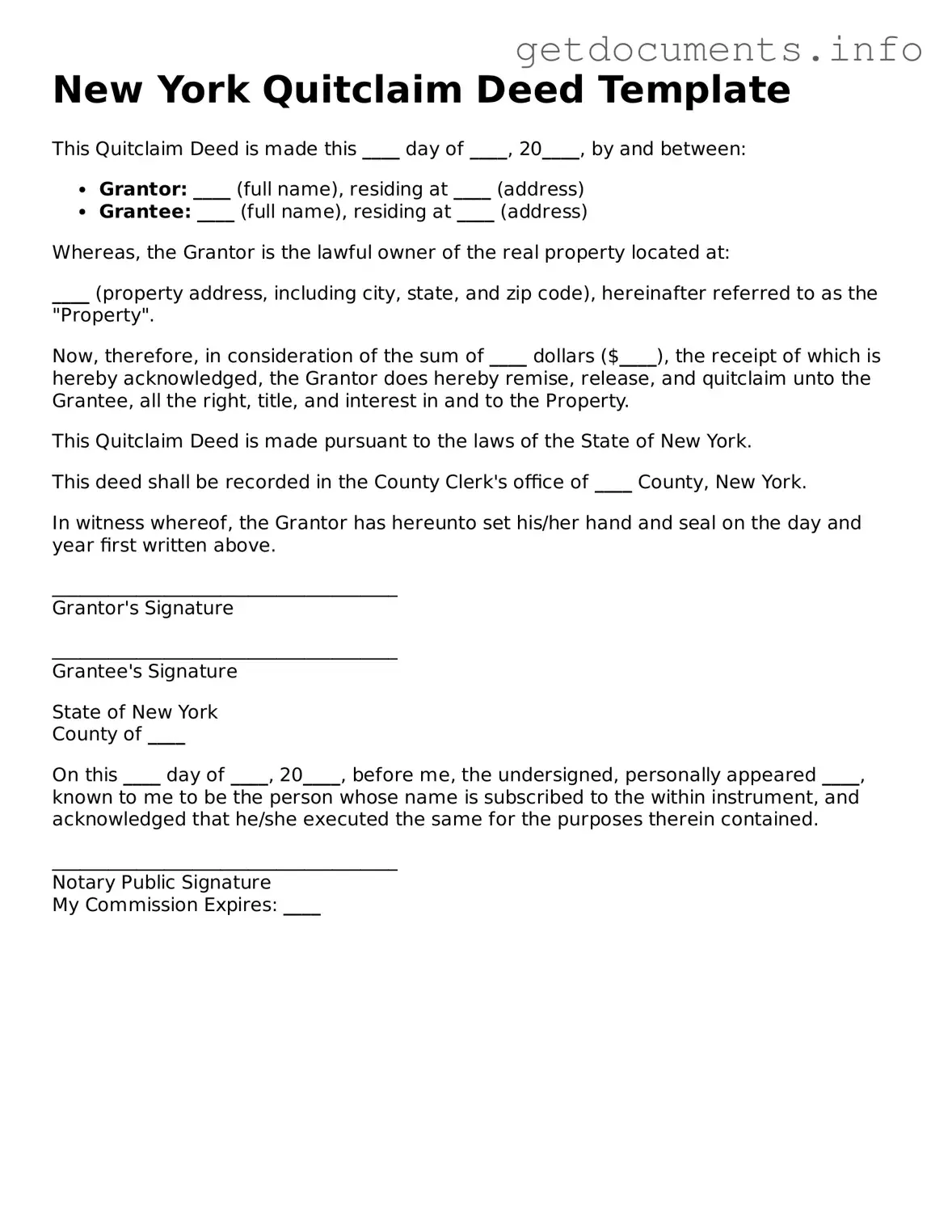Free Quitclaim Deed Template for New York
A Quitclaim Deed is a legal document that allows a property owner to transfer their interest in a property to another person without making any guarantees about the property's title. This form is often used in situations where the transfer is between family members or in divorce settlements. Understanding how to properly fill out a New York Quitclaim Deed is essential for ensuring a smooth transfer of ownership.
Ready to complete your Quitclaim Deed? Click the button below to get started!
Access Quitclaim Deed Editor
